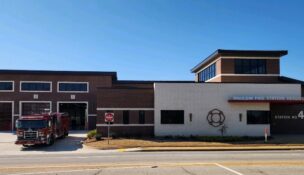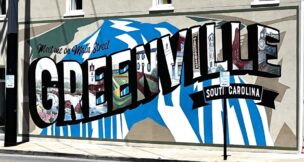Yandle: Uncertainty remains in U.S. economy
Staff Report //June 24, 2019//
In a report called The Economy at Halftime, economist Bruce Yandle said the U.S. economic outlook at the year’s midpoint is positive, “but with a heavy dose of uncertainty.”
“The unemployment rate is low, wages are rising a bit and GDP growth is hitting some strong marks, but U.S. policy battles over trade, deficits, immigration and foreign affairs offer heavy doses of uncertainty,” Yandle wrote in his June 2019 Economic Situation Report.
Yandle is Distinguished Adjunct Fellow for the Mercatus Center at George Mason University and dean emeritus of Clemson’s College of Business and Behavioral Science.
GDP growth for 2018 fell from a quarterly high point of more than 4% in the second quarter to 2.2% in the fourth quarter. Following a series of year-end shocks — government shutdown, interest rate increases and accelerating trade disputes — what had been a fast growth economy was trembling, the report said.
“However, the first GDP growth estimate for 2019’s first quarter arrived showing a handsome 3.2%. But policy uncertainty raised its ugly head again when, in early May, U.S. trade negotiations with China fell apart, equity markets swooned and investors shifted from equities to cash,” Yandle said in the report.
Later in May, weakness in industrial production and other national data led some forecasters to offer pale second-quarter GDP growth estimates, according to Yandle. “For example, retail sales fell in April, as did the Federal Reserve’s industrial production index for the third time in recent months. Along with the weaker data came a pessimistic assessment of the outlook for the U.S. freight market.”
The reduced pace of the GDP is driven by two things, Yandle said. The first is Washington policy uncertainty associated with trade, monetary policy and foreign policy. The second is the limited supply and growing scarcity of qualified labor to fill growth-based jobs.
“These and other data led the New York Fed’s May 24 NowCasting report to list second-quarter GDP growth at 1.41%. On that same day, the Atlanta Fed’s GDPNow estimate came in at 1.3%,” Yandle writes in his report.
In past economic discussions, Yandle has referred to a Goldilocks economy, one where everything is “just right,” but warned of “the three bears returning home.”
“There is growing evidence that rising uncertainty regarding trade, interest rates and other government policies are making managers and owners of businesses hesitate and review the situation before making major new job-creating investments,” he said in January.
In this most recent report Yandle said of the Goldilocks economy: “I am not sure about Goldilocks, but I think it is safe to say that 2019’s growth will come in close to 2018’s 2.9% level. With all its ups and downs, I am expecting 2019’s GDP growth to register at 2.8%.”
As tariff talks continue, Yandle said, “the effects of trade war ripple across the entire economy in complex ways, through both direct and indirect effects.”
South Carolina’s economy is more international and export driven than the nation’s economy, Yandle said.
“Added to this is the fact that China, the chief target of U.S. tariff actions, is the No. 1 destination for S.C. exports. The ongoing trade war has already had a negative impact on the S.C. economy. I am hopeful that trade-war sword rattling will calm down in early 2019, and that U.S.-imposed tariffs and restrictions and other country retaliations will be relaxed,” he said.
The top four countries receiving goods from South Carolina are China, Germany, Canada and Mexico, “all of which have been singled out by the president,” Yandle said. “Our economy is wrapped up in a global network.”
l















